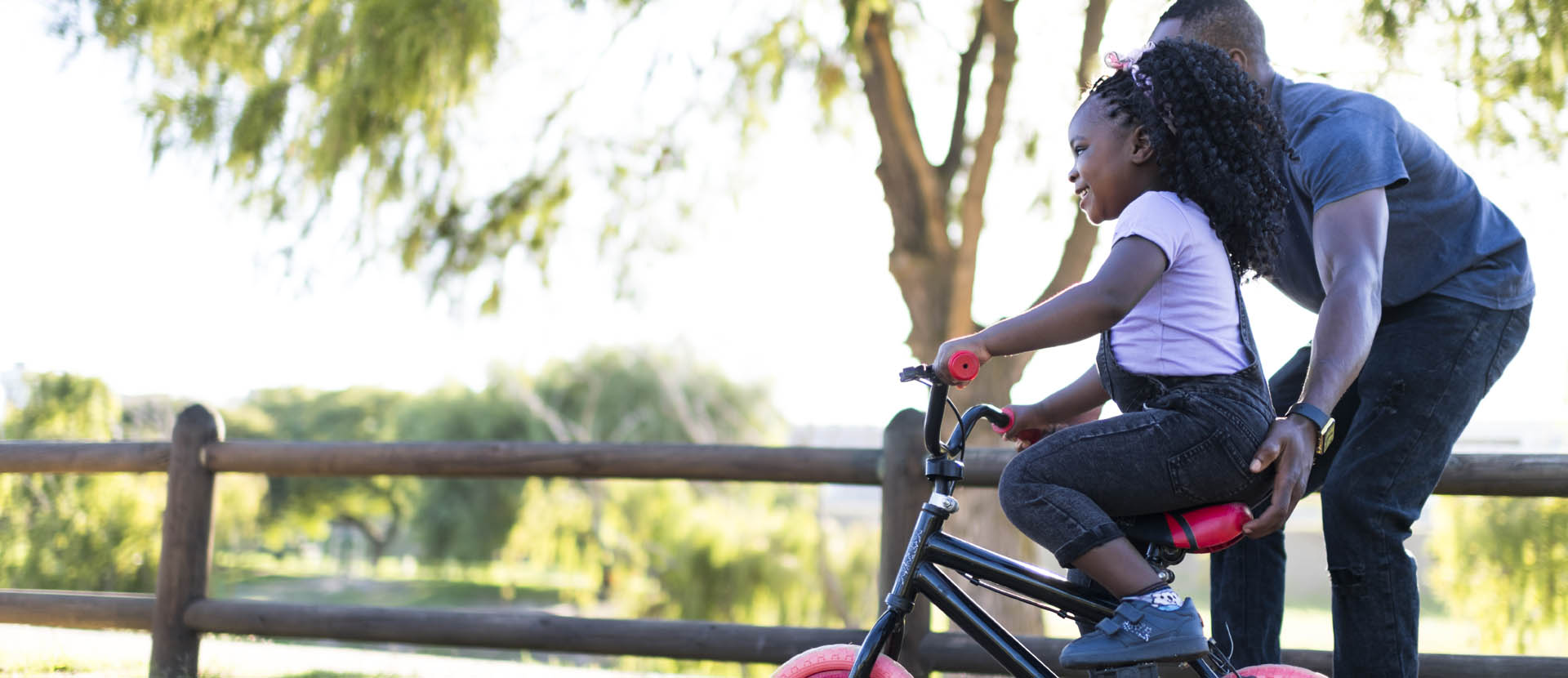Tips for Helping Your Child Learn to Ride a Bike, Whatever Their Age

Learning to ride a bike is a fun and brilliant skill for children to learn, and having the right equipment can make things a whole lot easier.
Family bike rides are a wonderful way to spend fun and active quality time together. Whether you’re an avid bike rider and are keen to get your child involved, or are looking to introduce this activity to your repertoire of outdoor activities, discover some tips and advice for every age and stage…
Learning to Ride a Bike: Finding the Right Equipment
We asked the experts at British Cycling for some advice on how to help your child learn to ride a bike, and their advice centred around getting the right equipment for your child and finding a safe place to practice.
There are many different kinds of bikes that can be used, depending on the age and skill of your child. It’s important to ensure that your child is fully comfortable with one before moving them on to the next level.
Tricycles
Tricycles have pedals so your little one can learn to get around on their own in a safe manner. They have excellent balance and stability and are suitable for children as young as ten months old.
Balance Bikes
Balance bikes can also be a brilliant vehicle to get young children cycling. Balance bikes are like normal bikes but without the pedals. With these, your child can learn to balance, steer, and gain confidence on two wheels - safe in the knowledge that they have their feet on the ground.
Scooters
A scooter can provide a great alternative way to learn balance. A scooter separates the steering/balancing function from the pedalling function, so your child can concentrate on learning to balance without the distraction of pedals.
Stabilisers
Stabilisers are another easy way to learn how to ride a bike as they give rear bike support. Children can learn to pedal, steer and brake on their own, without needing to worry about balance. However, you should look to remove these as soon as possible, so that your child doesn’t develop any bad habits on the bike and/or become too dependent on them.
Bikes
The most important rule here is ensuring the bike fits your child. When you buy a bike, make sure your child is always fully in control of their bike. They should be able to put both feet on the floor when they are starting to learn.
Accessories
A tag-along is a good way of getting your child used to the feeling of cycling without having to do too many things at once. The front half of their bike is attached to the back of an adult one, allowing your child the chance to ride, without having to worry about keeping up. Your little rider can add some of their own pedal power or just freewheel and enjoy the ride.
Remember to get your child fitted for a helmet before putting them on a bike.
Learning to Ride a Bike: Practice Makes Perfect
Try not to expect everything to go perfectly from the get-go. You'll need to slow down, but as your child develops and finds their feet, or pedals, they will improve and eventually you'll be enjoying a fun-filled day out on your bikes.
Where is The Best Place to Learn?
The pavement outside the house is fine and tarmac is a good smooth surface, but if you have a nearby park with short dry grass, this might be better. The wider the area the better, so they are not worried about obstacles. Try to find a gentle slope if you can. At first, try to avoid busy hours where you know there will be lots of car and foot traffic, as this might feel scary for your child.
Look Ahead
Children can tend to look at the person teaching them to ride, which can lead to falls. Looking at the ground is also a common cause for learner crashes. Ask your child to look at an object in the near distance, and to focus on that instead of looking around.
Choose the Right Position
If you're on the road with your child, take up a position behind them. If there are two adults in your group, it's a good idea to have one in front of your child and one behind.





